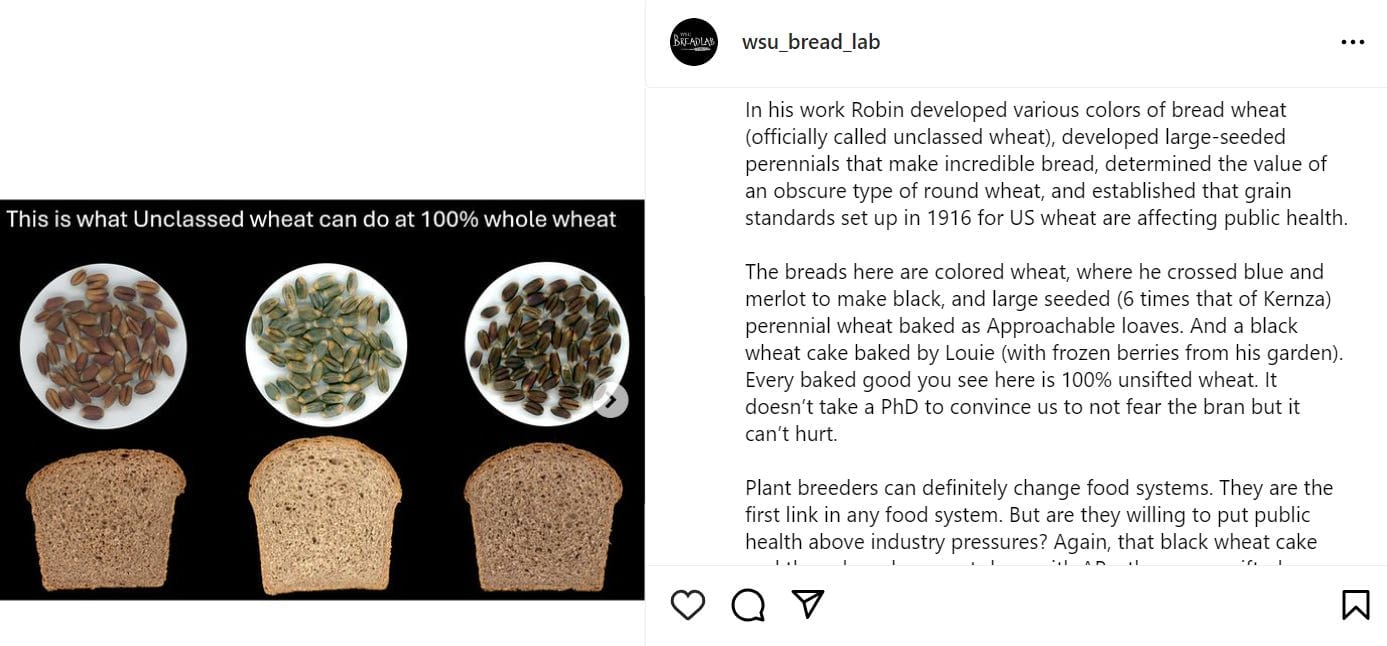Grains

After I missed last month’s Northern Grain Growers Collaborative conference conference in Vermont, I had serious regret to combat. This really cool meeting was born 20 years ago as farmers like Ben Gleason and the late Jack Lazor and decided to explore growing grains for organic dairy feed. While that demand waned, the exploration dovetailed nicely with locavore interest in staple crops. Farmers, the University of Vermont Crops & Soils Team, and bakers have been putting their heads together ever since.
The collaboration I see in that state is a strong model. Heather Darby leads UVM’s efforts, and all 20 of them work tirelessly to trial plant varieties, test harvested grains for pests and performance, and more. Bakers at King Arthur, Red Hen Baking Company, and Elmore Mountain Bread, to name a few, work closely together to come up with protocols to test flours and figure out what grains will do best on farms, in the milling process, and for baking. The same kind of analysis is given to malting, and in looking into crops like hemp and flax. New American Stone Mills, whose products can be used to trace places where people are growing and using local/regional grains, is a part of this fertile grain environs. So, if regional grains are intriguing to you, I hope you’ll keep your eye out for this conference next spring. It’s a great chance to meet passionate people and learn some nice skills.
Missing this one inspired me to share some materials for home study:
1. To learn about what it takes to grow and use grains in New England, where summers are moist and not exactly friendly to bread wheat, start here:
- UVM’s Crop & Soils Team hosts good resources with lots of media about their inquiries into grains—and a tribute to Jack Lazor, who wrote the book on growing grains in New England.
- University of Maine has a good page of resources, too.
- And Cornell Cooperative Extension has a list of links to lots of grain growing resources.
If you are a baker, and you probably are, given where we are, don’t dismiss the farming facts; learning about growing food grade grains will benefit your baking knowledge, I swear!

2. AGC is a Midwest grain group that I write for, and a couple of years ago we made a grains guide for their website. Researching and writing this was a collaborative effort, and I am proud of the answers and facts we assembled, including:
- Why people choose to grow and use grains outside of the dominant farming and food processing systems.
- Grain processing basics, from cleaning and drying, to milling, malting, and upcycling.
- Grains 101 is an in-depth primer. Head here to learn the history and uses of 16 different grains, and how they fit into regional agricultural systems. This page also includes another glossary of grain terms, so you can sort out things like pseudocereals and GMOs.
3. Beer Sessions Radio is a lively program made by Jimmy Carbone on Heritage Radio Network. Jimmy has covered the Northeast grain beverage trail pretty thoroughly—so of course my voice is on some of these recordings. But I’m not the reason you should queue up this playlist of grainy conversations! You should because these are a fun way to get up to speed on grains, and how brewers and distillers work their grainiac magic.
4. While you’re at HRN’s main site, poke around for the flour future. Here’s Kevin Morse from Cairnspring Mill, and mill innovator Fintan Keenan, and Central Milling’s Nicky Giusto turned up on Peter Reinhart’s Pizza Quest! These are just a few hidden gems I found—I know there are more.
5. Farmerama offers great grain and bread radio, too. Their series called Cereal was thorough and engaging.

6. Oregon State University has been looking into barley for a good long while, and they’ve got some great grain ed resources.
- Of special note is this page full of lessons for classroom use.
- For understanding barley from a kitchen perspective, this zine, barley world, is a must.
7. Washington State University is home to The Bread Lab, and they also host a suite of resources to help navigate grains. King Arthur’s west coast site is right there with them, so if you are near Seattle you may well have visited for a class, popup or field day. If you are gazing from afar, check out their social media. Recent posts about Dr. Robin Morgan’s studies generated a lot of enthusiasm, and I am among those excited to read his work when it is published.

The list above is the tip of the iceberg — please tell us where you go for grains info and inspiration!
Before I go, I want to share with you a fundraiser for Tuckaway Farm, a New Hampshire farm that’s been working hard for grains, and had a fire. It’s good to see donations pouring in, and I’m so sorry to know of this setback.





Member discussion